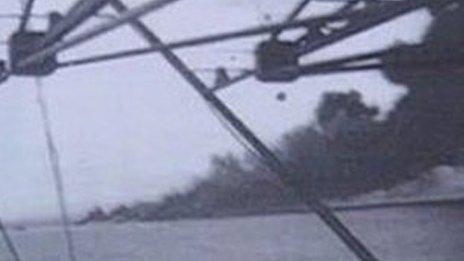Families of HMS Dasher dead want honest answers
- Published

HMS Dasher was a merchant ship converted into an aircraft carrier
The families of hundreds of sailors killed in Scottish waters during World War Two, say they have been cheated of the truth.
At poignant events marking the 80th anniversary of the sinking of aircraft carrier HMS Dasher, the desire to know what happened to the bodies of hundreds of its crew was stronger than ever.
The vessel blew up in the Firth of Clyde on March 27th 1943 and went down within eight minutes not far from the shore. The cause is not clear but it did not involve enemy action.
There are continuing questions about what might have happened to those who lost their lives.
Last weekend, descendants of those lost, accompanied by Royal Navy personnel and representatives of the Royal British Legion took the ferry from Ardrossan to Brodick on the Isle of Arran.
The ferry stopped over the site of the wreck of HMS Dasher. Wreathes were laid over the side after a short service of commemoration.
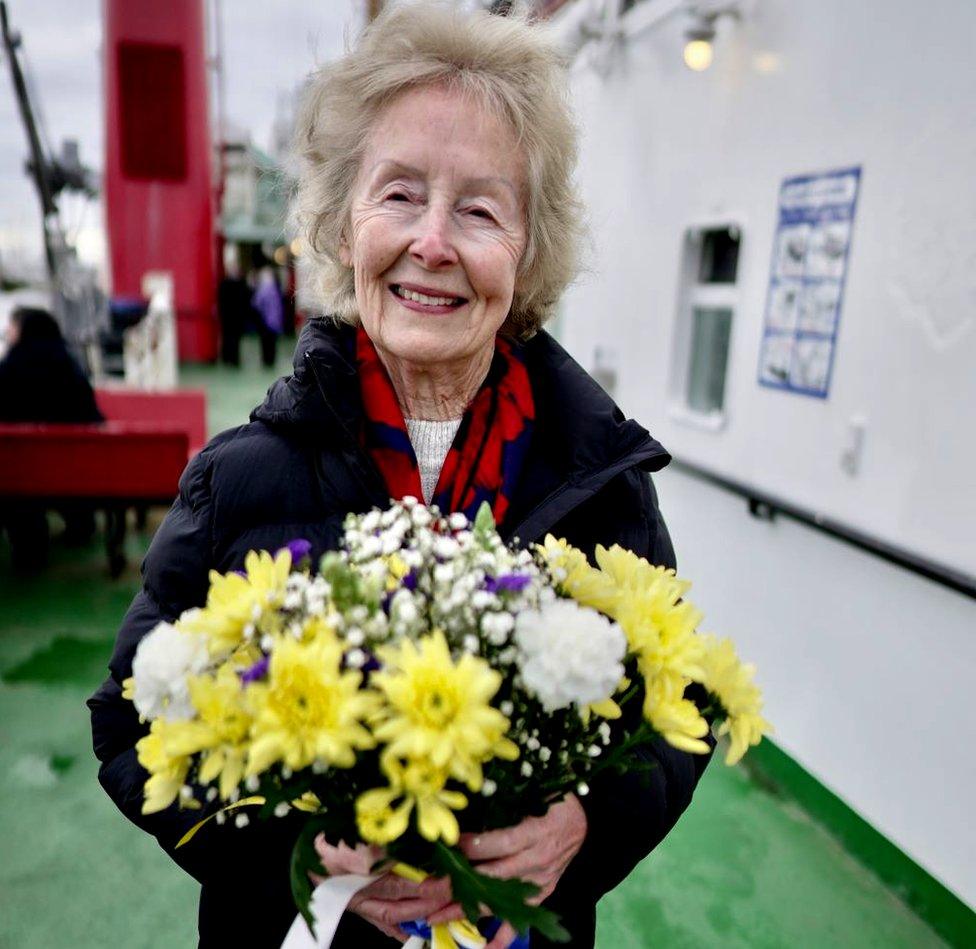
Dame Mary Richardson attended the memorial and has tried for many years to find out what happened to the remains of crew members
Dame Mary Richardson, aged 87, was there remembering her father George Habgood. She later read a tribute in a remembrance service at the HMS Dasher memorial gardens in Ardrossan.
Out of 528 personnel on board, the death toll was 379 but only 23 were given official burials. Some of those were carried out in Ardrossan cemetery.
Dame Mary and other relatives of victims have been trying for decades to find out what might have happened to the bodies of the rest of the crew.
Families 'cheated'
She told BBC News: "There were so many families there who had links with Dasher and it is quite clear the Dasher memory is embedded in these families - there were some there with three generations and they are still asking questions.
"There is a feeling they've been cheated - that they've never been given their right to an honest and full answer and I think that has to come. Far from dying out, it is as strong as it ever was."
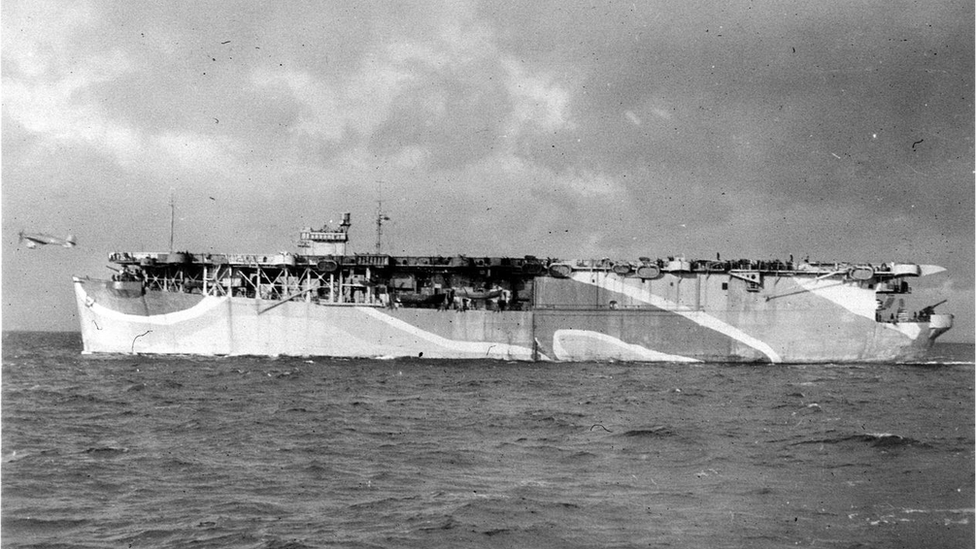
HMS Dasher blew up in the Firth of Clyde in March 1943
Witnesses at the time have passed on testimony that there were many more than 23 bodies washed ashore and suggested there must be unmarked graves.
Bill Watson's father, also named Bill, was a student in 1943 and working as a volunteer ambulance driver. Mr Watson told us that his father was asked to work with others recovering bodies washed up on the shoreline around Ardrossan.
He said: "There were two in each group and there were several groups. His recollection is there were many trips. They would get six of these poor souls onto these ambulance trailers and they would be taken to local mortuaries. Some were laid out in a hall on the dancefloor.
"His estimation - him and his small group - is greater than 50 - if there were other groups you would assume many more than 50."
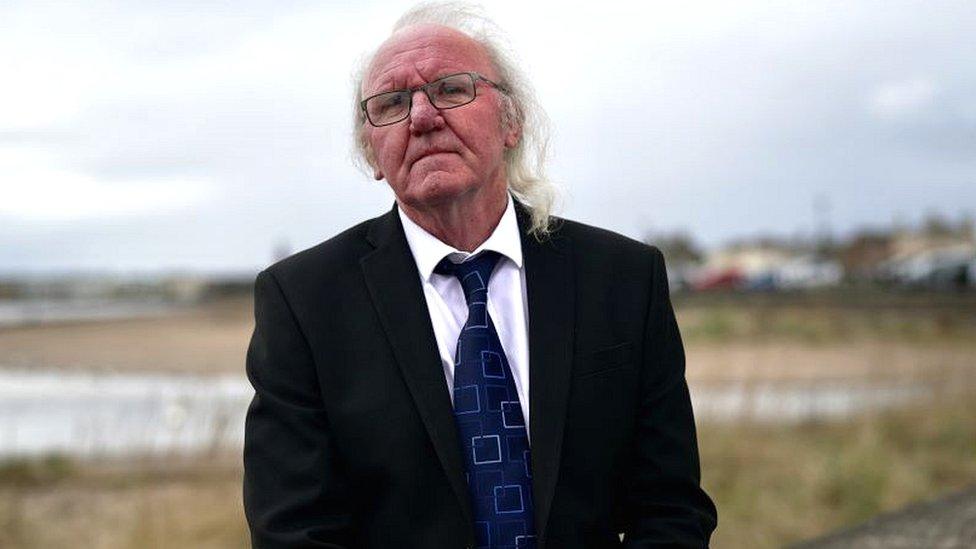
Bill Watson's father - also Bill - worked as a volunteer recovering bodies from the shore in 1943.
Dame Mary Richardson has been told by one family member that his step-father was an 18-year-old sailor serving on a minesweeper which was in the area at the time.
He had spoken of taking part in a burial party and recalled that some bodies were buried on an island. Dame Mary has personally funded an archaeological survey of Sanda island off the Mull of Kintyre. This has revealed some intriguing indentations near the shoreline.
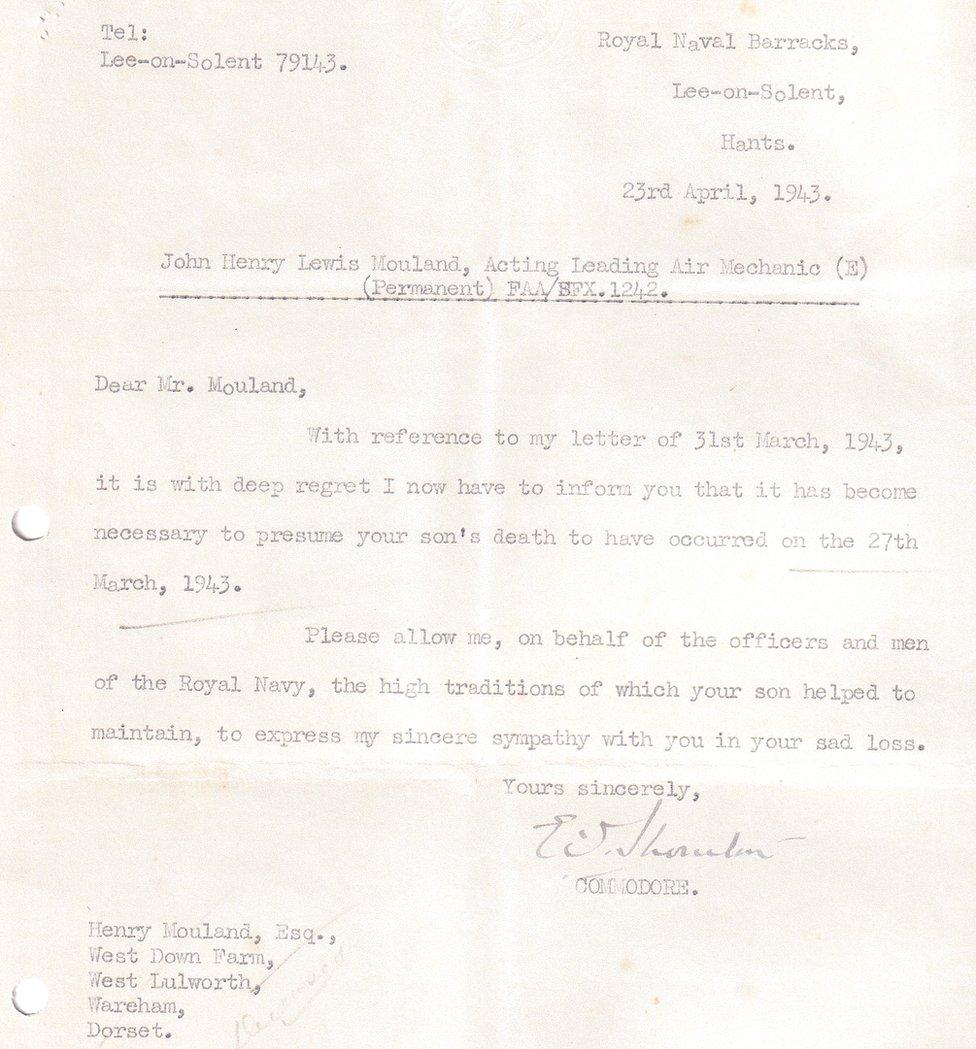
Many were presumed dead but relatives never found out what happened to their remains
The survey was carried out by Drone Scotland acting for GUARD Archaeology (formerly part of Glasgow University).
It concludes: "The survey located an anomaly that has the characteristics that are associated with burial and, especially, mass burial; a measurable dip in the ground surface coupled with distinct edges where the cut was made."
The report does make clear though that there is only the "potential" for there to be graves on the site.
In a statement, the Royal Navy has said that the creation of a mass unmarked grave would clearly run counter to Admiralty policy on the burial of wartime casualties and that all sources relating to the sinking of HMS Dasher are in the public domain.
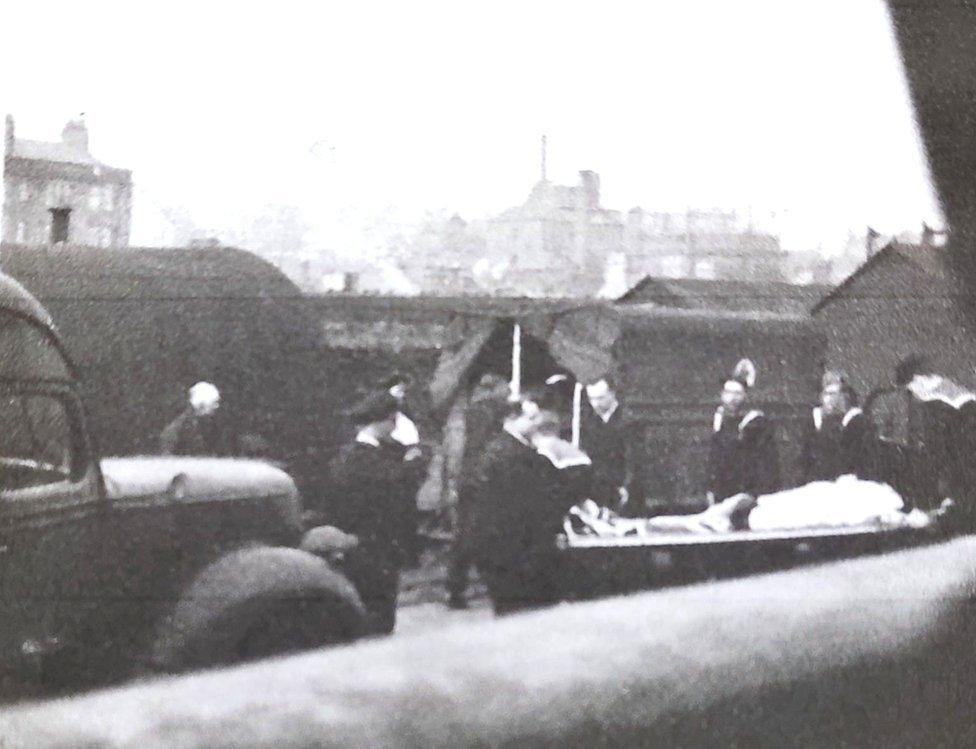
Bodies being brought ashore from HMS Dasher
As the anniversary events drew to a close, Dame Mary made it clear she would continue her investigation and, working with other families, campaign for more official information to be revealed.
She connects with words from the wartime poem The Life That I Have by Leo Marks.
"It makes me very sad," she said. "It's a commemoration of these men - but I think like in the poem "sleeping in the long green grass" for 80 years but alone and unrecognised.
"Eighty years is a long time and by the time 100 years comes I won't be here - so I've got a limited time to find these men".
Related topics
- Published11 November 2021

- Published26 April 2012
